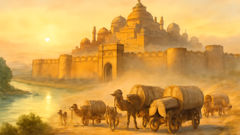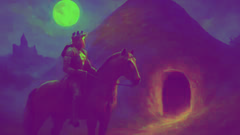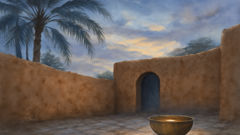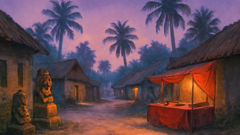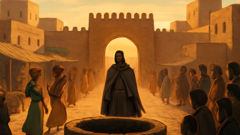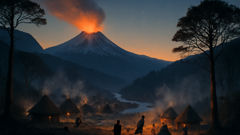Introduction
Beneath the desert sun and beside the silver thread of the river, Wagadu rises as a prayer made tangible—a city built not merely of stones but of stories, of gold-dusted caravans, of the echoing drums that keep time for the hammer and chisel. The Soninke elders tell of a place where the river bends to listen, where every market stand is a doorway into a memory, and every gate is a map drawn with the ink of ambition. This is the Tale of the Wagadu, a chronicle of four cities that appeared, glowed, faltered, and finally learned to endure with a different kind of grace: not the triumph of conquest alone, but the quiet labor of memory, of debts acknowledged, of vanity tempered by the knowledge that a city survives by the strength of the shared vow to care for it beyond personal vanity. It is a story of salt air and dry wind, of copper coins that brightened foreheads and worries, of mothers who braided their children’s futures into the walls, and of old men who reminded the young that every stone has a voice when listened to with patience. In these pages, we travel along caravan lanes that glitter at night, through courtyards where oaths are whispered into the cool, clay-dusted air, and into a future that keeps returning to a single, stubborn question: what does a city owe its people when the people most hunger for more than bread? The Wagadu you will meet is both a beacon and a burden—a place of splendor and a ledger, a legend that asks its listeners to weigh gold against names, glory against gratitude, and the cost of rebuilding against the price of forgetting. Consider this Introduction as a doorway into a saga that refuses to be mapped by conquest alone, a saga that invites you to listen long enough to hear the pulse of thrumming drums echoing across a river-washed horizon.
I. The First Ember: The Founding of Wagadu
The first ember of Wagadu was not a spark in a blacksmith’s forge but a meeting of rivers and voices. The Soninke elders gathered where the Koumbin river bends toward the plateau, arguing that a people’s strength is not only the wealth they amass but the stories they remember. In that circle of elder women and scarred hunters, a chief named Dinga Koy was chosen not because he carried the heaviest spear but because he listened most deeply to the river itself. The river spoke in damp oaths and the lick of reeds against stone, in the way the soil drank rain and saved it for the next season’s promise. They built a city not on a map, but on a lyric—the rhythm of many feet, the laughter of children, the careful accounting of grain in the granaries, and the subtle mercy given to a poor man with a broken boat who still found a way to barter his pain into a better future. Wagadu’s walls were grown from the old riverbank’s clay, from the sound of barter and the scent of sesame oil, from the shared memory of trade routes that stretched toward forests and deserts alike. They named the place Wagadu out of a desire to remember the earth’s patience, to honor the river’s willingness to give, to accept that a city’s birth is a ceremony as much as a construction. Yet even the first ember bore a warning: a city that rises on borrowed dreams burns hot and fast unless tempered by the discipline of memory. The people chose to plant trees of memory along every gate—names carved though generations, oaths whispered to the soil, and the insistence that every new citizen learn the old songs before learning the new roads. In those days, the market sang with the clamor of spices and gold, and the walls kept time with drums that rose and fell like a heartbeat. Wagadu was not merely a place to prosper; it was a vow to be patient with prosperity, to temper ambition with duty, and to let the memory of debt be paid forward with every act of generosity toward strangers who arrived with stories in their pockets and the kernels of future harvests in their hearts. The first embers glow still in the quiet corners of the old markets, where traders tell a story about a girl who offered her last bead so a family might buy bread, and the bead’s color—red as a sunset—remains a talisman over the gate, a reminder that the city’s life is nourished by the generosity of all its children.
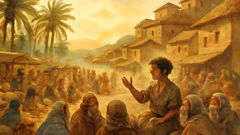
II. The Middle Gate and the Vanities of Dawn
The middle gates opened onto a world of color and danger, where caravans stacked with saffron and salt-like rumors rolled through the arches and the gold dust on traders’ faces glittered like stars on a dry night. Wagadu grew in the mind before it grew in stone: a city of mosques and granaries, of courts where judges spoke in calm measured vowels and the street poets answered with verses that turned danger into humor and fear into memory. Yet with every sunrise the merchants’ lamps burned brighter than the stars, and the city learned a new language—credit, debt, interest, and the art of saying no without breaking a neighbor’s heart. The four great quarters—river, market, citadel, and grove—wove together in a tapestry that looked like unity but whispered of competition. Dinga Koy’s children learned to tell time by the caravans’ rhythm and to measure honor by how well one paid a debt not merely in coins but in personally kept promises. It was here that vanity first learned to wear the cloak of necessity, for a city that could feed itself with one palm-full of rice could imagine it could feed the world with a single boast. The walls heard these boasts and kept them safe, but they also listeningly registered every slight—a miscount, a missed tribute, a borrowed rope that failed to return. In those years the Wagadu people began to realize that the harder something shines, the more careful the hands that hold it must be. Vanity grew like a vine, curling around the gates, whispering that the world would be saved by the shine of coin, not by the strength of kin. It is said a healer of the old quarter warned that debt is a thread: pull it too quickly and you unravel the fabric that holds a city upright. Wagadu’s first true test arrived not as a war, but as a drought that stretched the river’s patience and tightened the throat of every merchant who counted on the flood’s generosity. The drought burned away the easy confidence of abundance, and the people learned to hear the river’s memory as a teacher and a judge. They rebuilt with a new oath: to weave a city out of mutual care rather than borrowed light, to honor the dead by making the present possible for the living, and to remember that every proud tower owes its shadow to the ground that bears it.
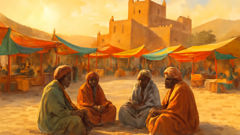
Conclusion
If you listen long enough, the wagadu of memory speaks in a voice that is both stern and generous. The four rebuilds did not erase the hunger of the poor, nor did they silence the horn of ambition; they taught the city to measure power not by the height of its walls but by the width of its mercy. The later Wagadu learned to borrow not only gold but patience, to lend not only money but time, and to build not only for today but for the stories that would outlive stone and river. The debt that haunted the last rebuilding was not paid in coins alone but in the restraint of those who called for grander temples, larger markets, deeper wells, and wider streets. A city’s true wealth, the elders whisper in the shade of the gatehouse, lies in its memory—the names carved upon the cornices, the songs recited at dusk, the quiet vow to resolve a conflict with words before swords, to feed a stranger a bowl of soup before counting the coins earned by selling his grandmother’s rug. The Tale of Wagadu ends not with triumph but with a legacy: the understanding that glory is a shared flame that grows brighter when every family guards one another’s night as carefully as its own day. The Wagadu of today keeps four wells of wisdom—humility, memory, debt paid in mercy, and the courage to rebuild again when the season returns. And so the city teaches the world a quiet lesson: that a city is not just a place to live, but a living archive of every breath its people have spent to keep it alive.

